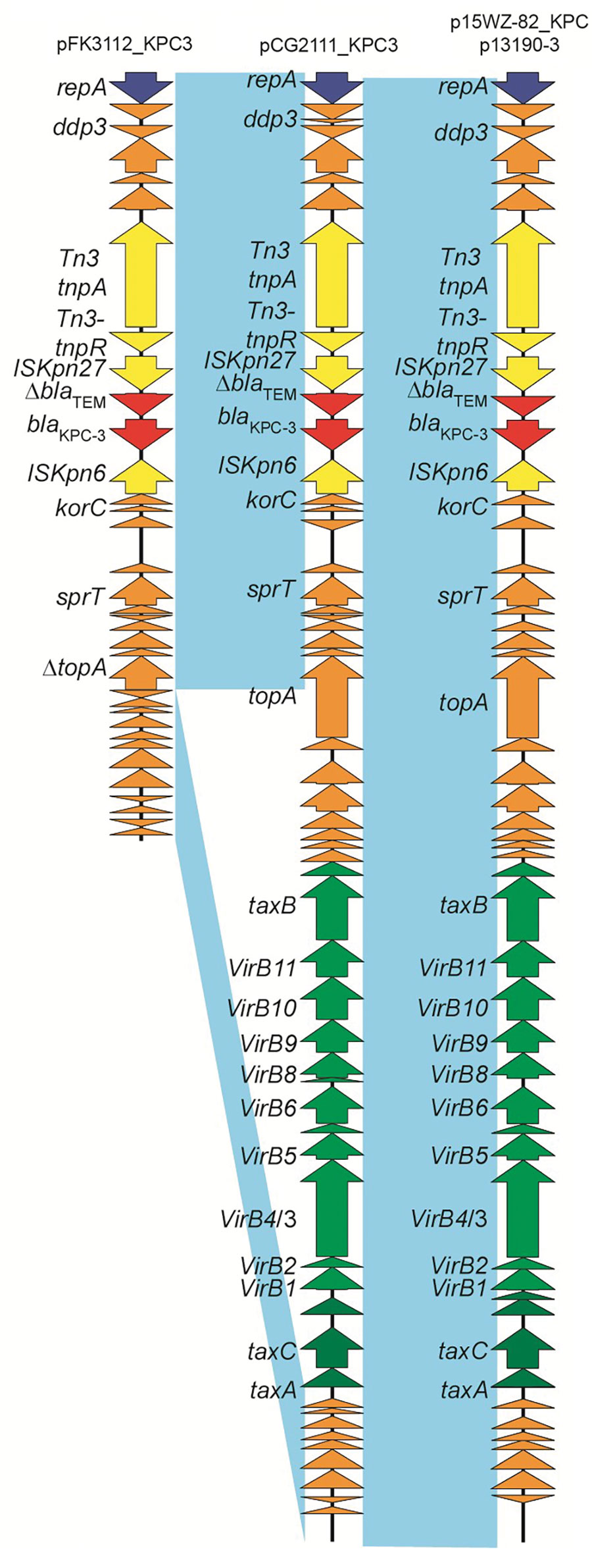Outbreak of IncX8 Plasmid–Mediated KPC-3–Producing Enterobacterales Infection, China
Lan Chen
1, Wenxiu Ai
1, Ying Zhou
1, Chunyang Wu, Yinjuan Guo, Xiaocui Wu, Bingjie Wang, Lulin Rao, Yanlei Xu, Jiao Zhang, Liang Chen

, and Fangyou Yu

Author affiliations: Ningbo First Hospital, Ningbo, China (L. Chen); First Affiliated Hospital of Wenzhou Medical University, Wenzhou, China (W. Ai, C. Wu, L. Rao, J. Zhang, F. Yu); Shanghai Pulmonary Hospital, Tongji University School of Medicine, Shanghai, China (Y. Zhou, Y. Guo, X. Wu, B. Wang, Y. Xu, F. Yu); Hackensack Meridian Health Center for Discovery and Innovation, Nutley, New Jersey, USA (L. Chen); Hackensack Meridian School of Medicine, Nutley (L. Chen)
Main Article
Figure 3

Figure 3. Comparative analysis of the blaKPC-3–harboring plasmid pCG2111_KPC3 (GenBank accession no. CP081510), pFK3112_KPC3 (GenBank accession no. CP081509), p15WZ-82-KPC, and Klebsiella pneumoniae p13190 in isolates from an outbreak of KPC 3–producing Enterobacterales infection at a tertiary hospital in Ningbo, Zhejiang Province, China, August 1, 2020–June 30, 2021. Open reading frames are portrayed by arrows and are depicted in different colors on the basis of their predicted gene functions. Red arrows indicate resistance genes, and green arrows indicate genes associated with the type IV secretion system. Orange arrows represent the backbone genes of the plasmid, and yellow arrows denote the mobile elements. Light blue shading denotes shared regions of homology among different plasmids. KPC, K. pneumoniae carbapenemase.
Main Article
Page created: May 05, 2022
Page updated: June 18, 2022
Page reviewed: June 18, 2022
The conclusions, findings, and opinions expressed by authors contributing to this journal do not necessarily reflect the official position of the U.S. Department of Health and Human Services, the Public Health Service, the Centers for Disease Control and Prevention, or the authors' affiliated institutions. Use of trade names is for identification only and does not imply endorsement by any of the groups named above.
